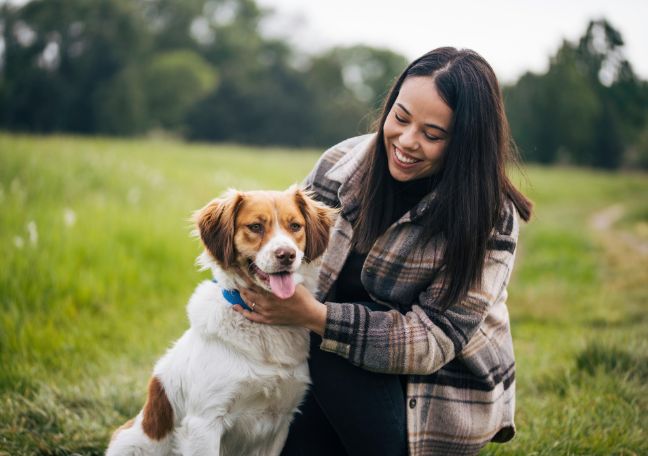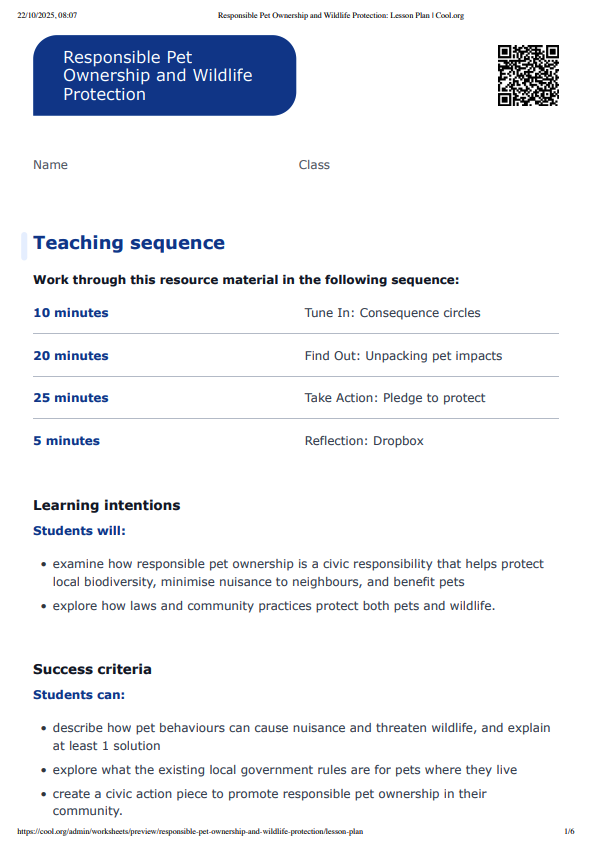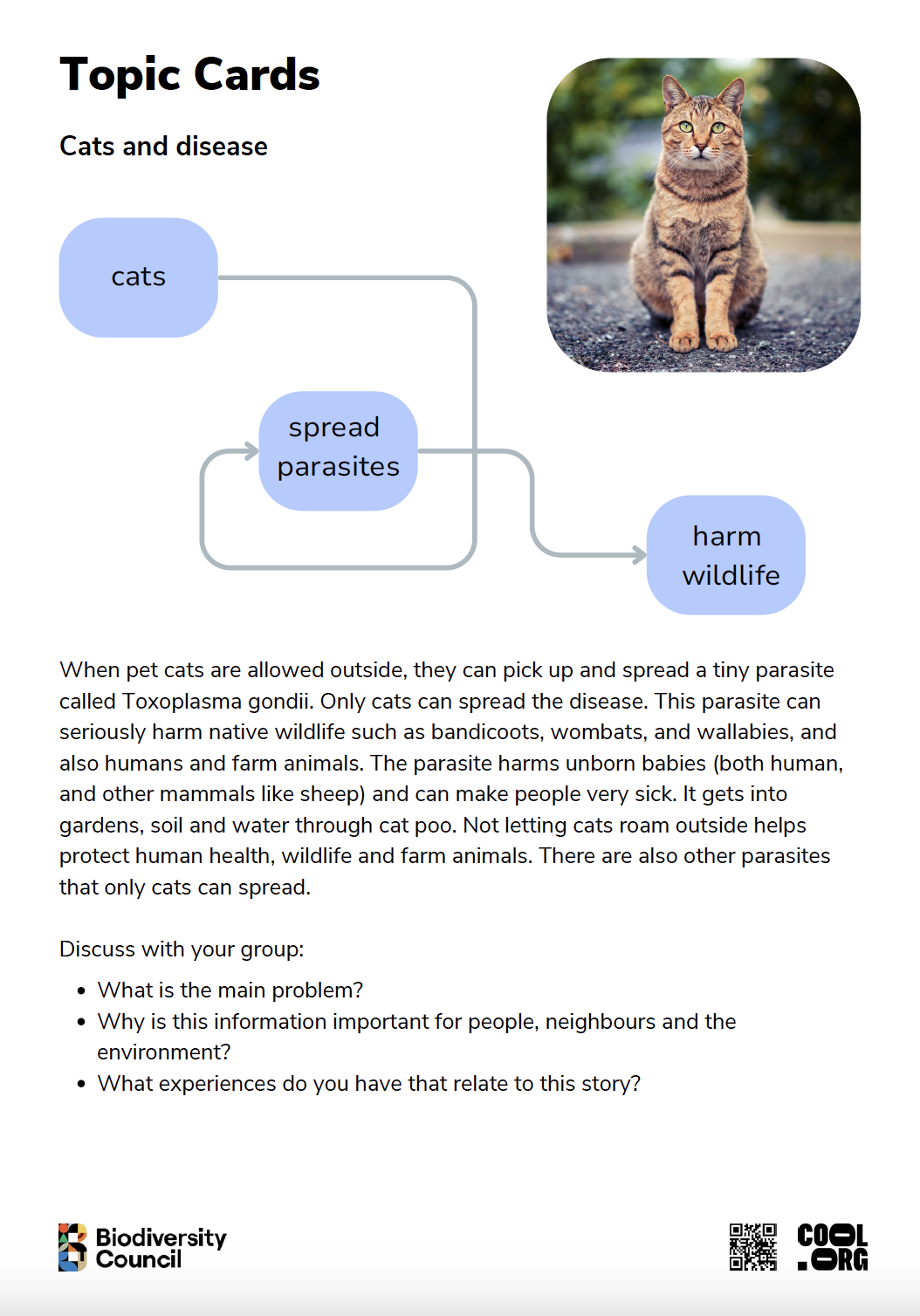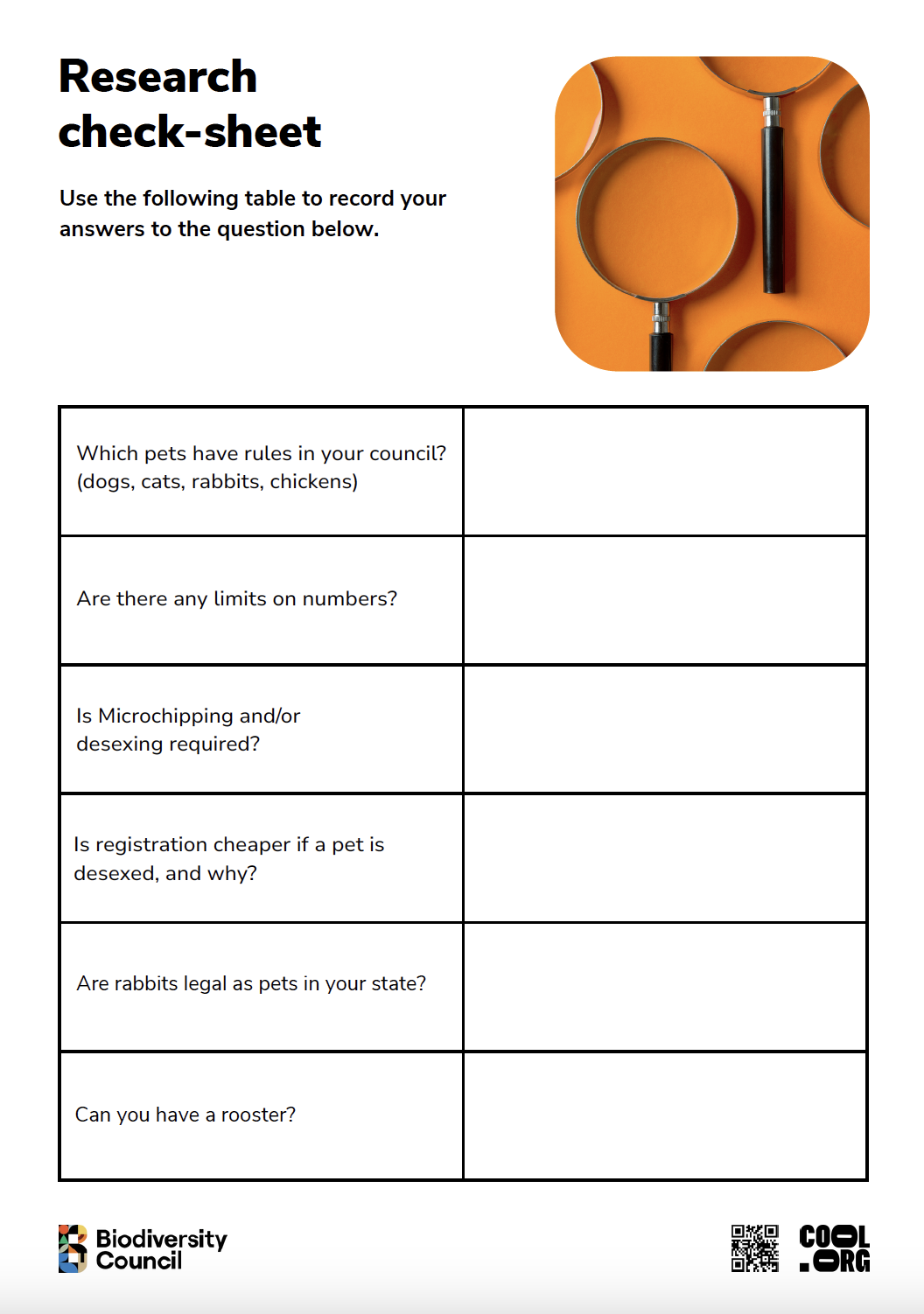Lesson summary
Students will examine what responsible pet ownership looks like by collaboratively discussing the ripple effect of both responsible and irresponsible pet ownership. Understanding of the importance of civic responsibility will be explored through topic card discussions and online research. Students will work collaboratively to produce an assembly presentation that promotes a pledge to protect both pets and wildlife in their area.
Learning intentions:
Students will:
- examine how responsible pet ownership is a civic responsibility that helps protect local biodiversity, minimise nuisance to neighbours, and benefit pets
- explore how laws and community practices protect both pets and wildlife.
Success criteria:
Students can:
- describe how pet behaviours can cause nuisance and threaten wildlife, and explain at least 1 solution
- explore what the existing local government rules are for pets where they live
- create a civic action piece to promote responsible pet ownership in their community.
Lesson guides and printables
Curriculum links
Select your curriculum from the options below.
Lesson details
Skills
This lesson is designed to build students’ competencies in the following skills:
- adaptability
- creative thinking
- collaboration
- communication
- community engagement
- digital literacy
Curriculum Mapping
Australian Curriculum (v9.0) content description:
Year 7, Civics and Citizenship
Students learn to:
- explain the methods or strategies related to making decisions about civic participation (AC9HC7S04).
Year 8, Civics and Citizenship
Students learn to:
- explain the methods or strategies related to making decisions about civic participation (AC9HC8S04).
Relevant parts of Year 7 Civics and Citizenship achievement standards: Students identify and describe the methods or strategies related to civic participation or action.
Relevant parts of Year 8 Civics and Citizenship achievement standards: Students explain the methods or strategies related to civic participation or action.
General capabilities: Critical and Creative Thinking, Digital Literacy, Literacy
Cross-curriculum priority: Sustainability
Level of teacher scaffolding: Medium - facilitation of resources, discussions and collaborative presentation
UN Sustainable Development Goals
Target 4.7: By 2030, ensure that all learners acquire the knowledge and skills needed to promote sustainable development, including, among others, through education for sustainable development and sustainable lifestyles, human rights, gender equality, promotion of a culture of peace and non-violence, global citizenship and appreciation of cultural diversity and of culture’s contribution to sustainable development.
Resources Required
- Activity sheet - Research Check-sheet
- Factsheet - Topic cards
- Poster paper
- Student devices
Additional Info
This lesson was created in collaboration with The Biodiversity Council.
Special thanks to our content partner, The Conversation and to The Garry White Foundation, The Hugh D. T. Williamson Foundation, Wedgetail and The James Kirby Foundation for their generous financial support.
Related Professional Learning
What Makes a Species ‘Threatened’? Teaching Biodiversity and Species Protection
Quick summary: Learn about biodiversity and threatened species with Ecologist Thomas Nixon. You will learn what biodiversity is and how it is regulated in Australia, and you will look at some specific case studies that show what is being done across the country to protect our unique biodiversity.





Welcome back!
Don't have an account yet?
Log in with:
Create your free Cool.org account.
Many of our resources are free, with an option to upgrade to Cool+ for premium content.
Already have an account?
Sign up with:
By signing up you accept Cool.org's Terms and Conditions(Opens in new tab) and Privacy Policy(Opens in new tab).